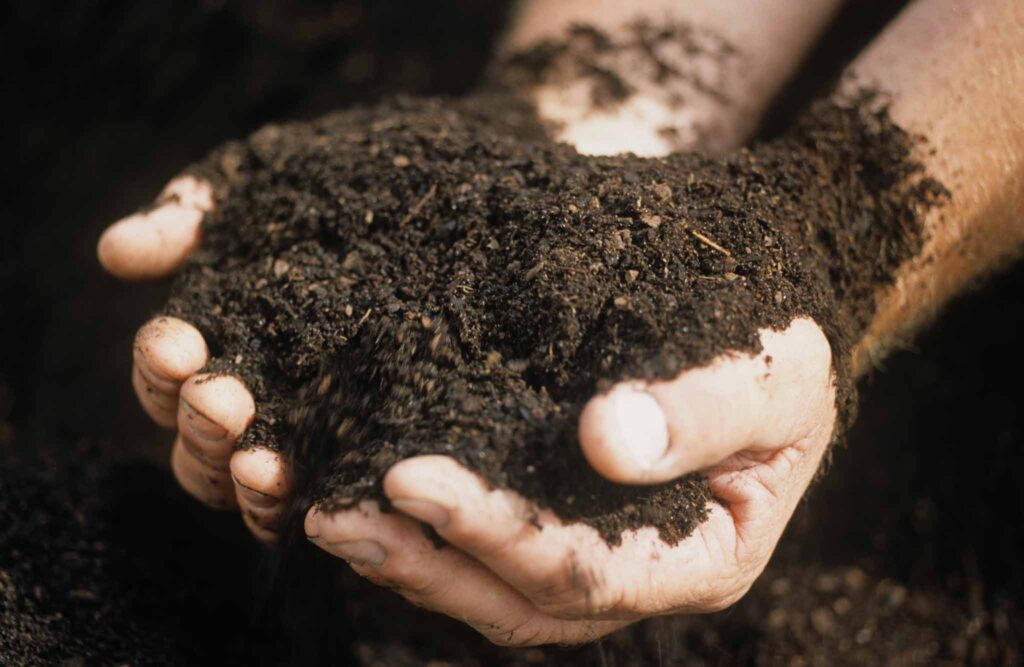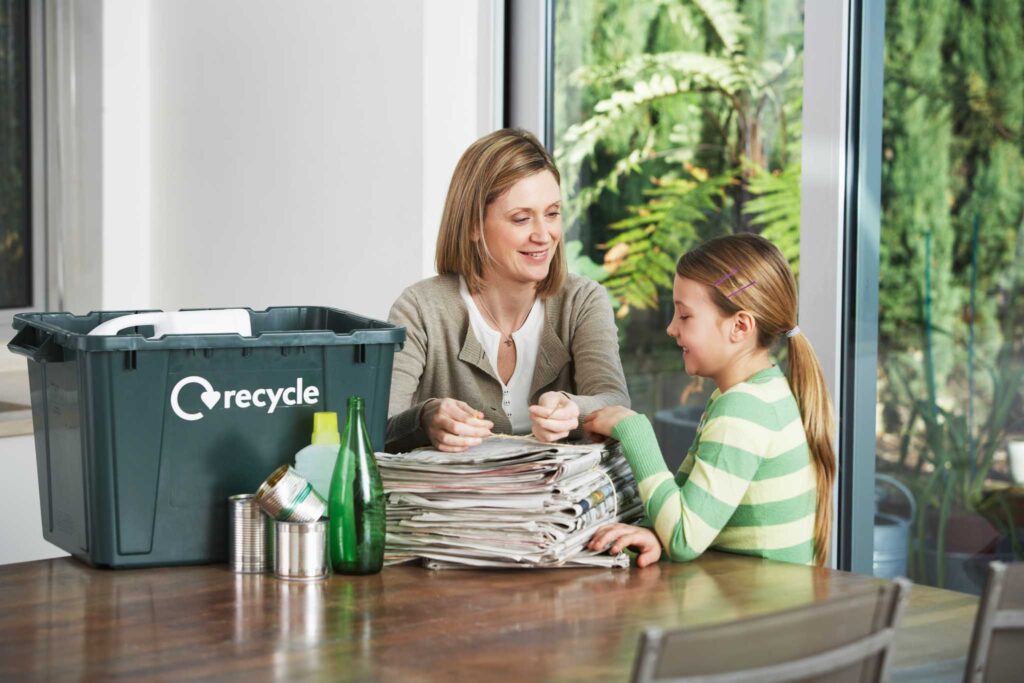How to Compost Like a Pro
Estimated reading time: 15 minutes
Whether you have acres of sustainable land to play with, a tiny yard, a balcony, or even some cupboard space, you’ve got options for an eco-friendly compost bin! Composting is becoming more popular with increased concern about climate change, waste management, and exponential human population growth. Starting a compost can help you create a more sustainable home. Learn how to compost like a pro and turn your kitchen waste and other organic materials into nutrient-rich soil you can use in your flower beds, potted plants, or garden.
Key Takeaways
- According to the EPA, landfills account for 20% of the methane emissions in the U.S.
- Composting has many benefits including reducing emissions, enhancing soil quality, and sequestering carbon.
- There are different ways to successfully compost at home, whether you have a large yard or no yard at all!
- All it takes is a little know-how and patience, and you can compost at home like a pro!
Jump Ahead:
What is Composting? – what’s happening in that compost pile?
Why is Composting Important? – there are many benefits to making compost!
Composting Methods – hot vs. cold composting & community programs.
At-Home Composting Options – options for outdoors, small spaces or even indoor composting.
Outdoor Hot Composting Process – how-to compost like a pro outdoors using a hot composting process.
What Not to Put in Your Compost – avoid composting these items!
Finished Compost – how to know when it’s time to reap the benefits.
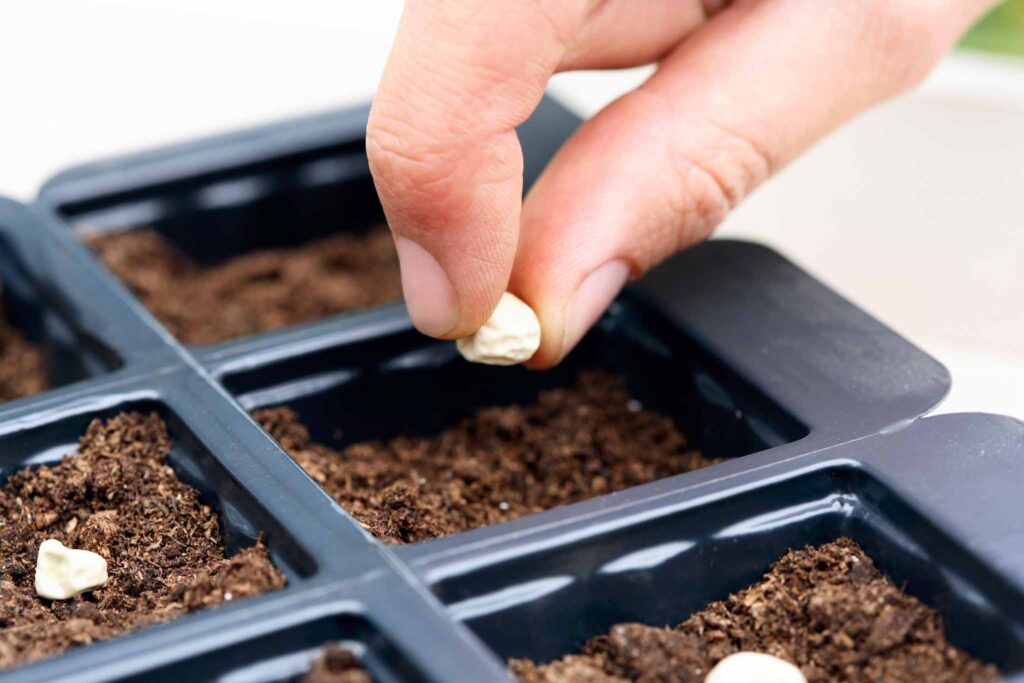
What is Composting?
Composting, put simply, is the process of turning organic matter into nutrient-rich soil. All organic materials eventually decompose naturally, but there are steps we can follow to speed up the process and reduce the harmful biogases that may be produced otherwise. When we follow these steps, we can ensure an aerobic composting process (one that uses oxygen). Organisms such as bacteria, fungi, worms, and other decomposers break down the organic material using oxygen, along with carbon, nitrogen, and water.
There are several different ways to compost, making composting possible in almost any situation or lifestyle. Whether you have a compost pile, compost bin, three-bin system, worm compost, or tumbler, you can use your food scraps and yard waste to create compost.
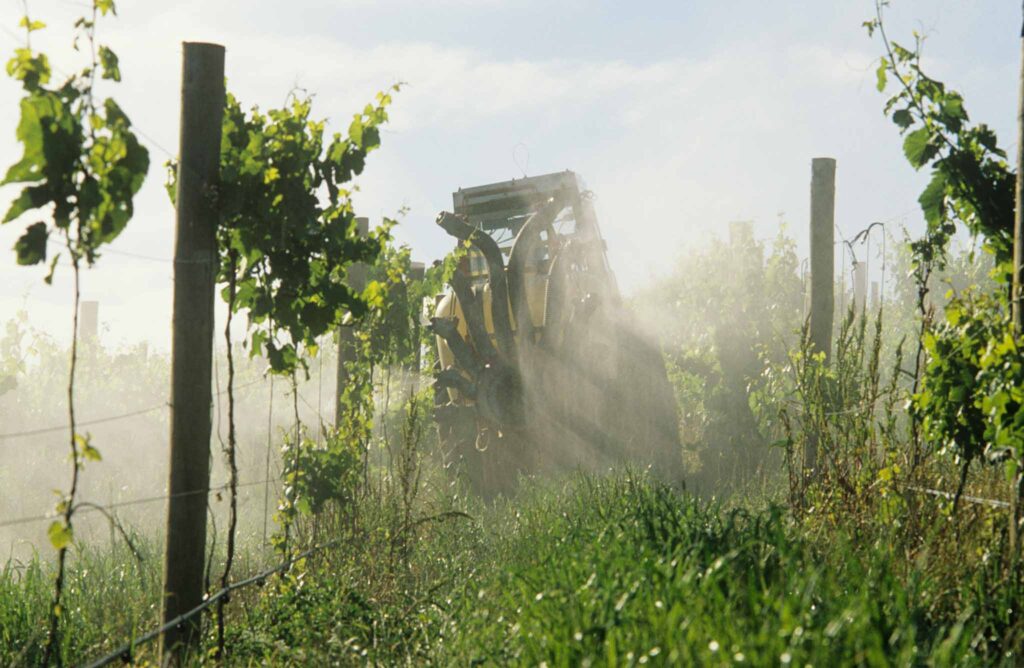
Why is Composting Important?
Reducing Waste and Emissions
When organic waste breaks down in a landfill, covered in layers and layers of other garbage, the process is anaerobic (without oxygen). The microorganisms that break down the organic materials in this way release harmful greenhouse gases such as methane and carbon dioxide. According to the EPA, landfills account for 20% of the methane emissions in the US.
Judy, Facilitator at Compost Collective, says that the most common reasons people don’t compost are that “People are either time poor or don’t care enough to take the step in the direction of composting. In addition to this, many apartments have garbage disposals that ‘do the job’ (so people think), unaware that this disposal method is impacting our waterways.”
She also says (and I agree) – “I wonder, if it was common knowledge that ‘WE CAN CAPTURE CARBON’ by recycling our food scraps and household waste, if more people would be willing to give it a go for the sake of the environment?”
By practicing the “replant or rot” principle of the 10 Rs of sustainability, we can reduce these climate-change-causing gas emissions.
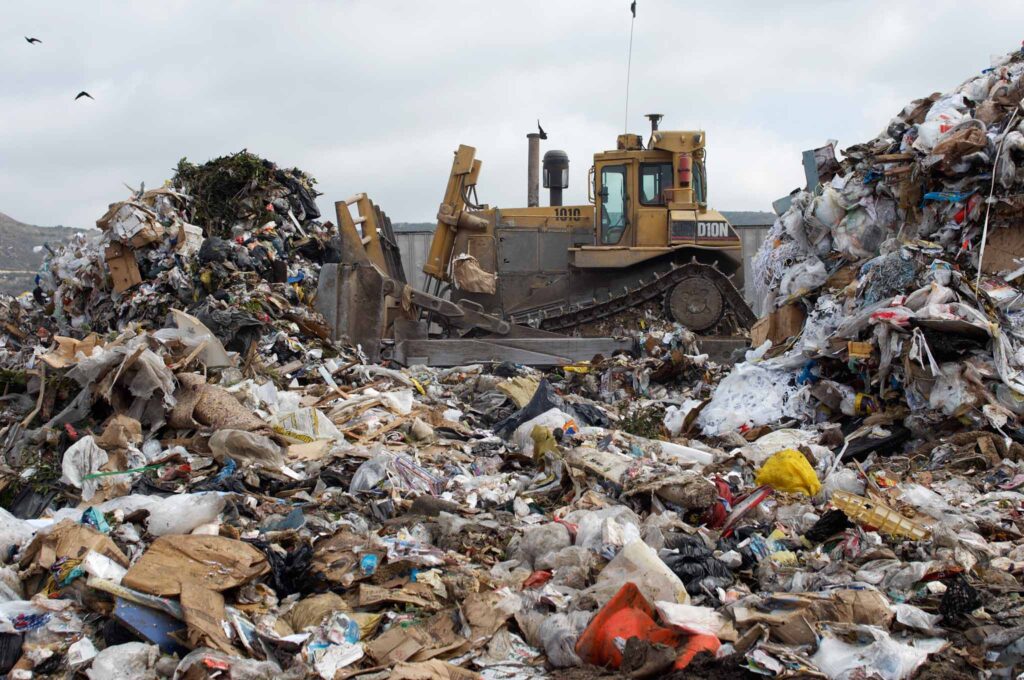
Benefits of Using Composted Soil
Composted soil has been shown to retain water, helping reduce water use at home and the volume of water needed for irrigation. It not only increases plant growth, but when added to soil, compost can prevent soil erosion and reduce or eliminate the need for chemicals such as fertilizers.
This infographic breaks down the importance and benefits of composting quite nicely.
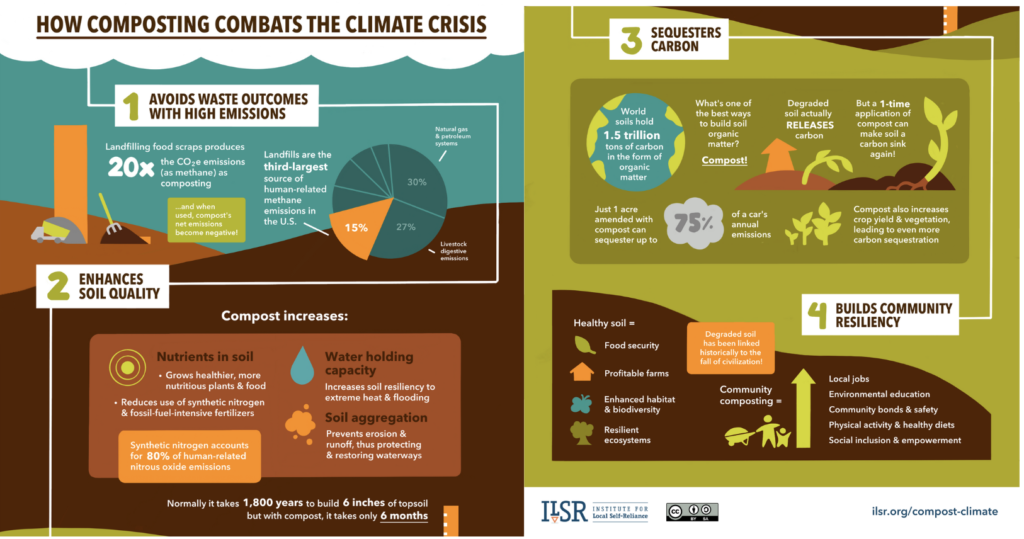
Composting Methods
Hot vs. Cold Composting
The main difference between hot and cold composting is in the turn!
In a cold compost pile, we don’t turn the material at all. This can eliminate air spaces, resulting in the anaerobic decomposition of the organic materials. This process is much slower, and depending on the type and size of materials you add, it can take up to two years to produce finished compost. The benefit of cold composting is that it requires minimal effort as you can add materials as you need and don’t need to monitor such things as moisture or temperature.
In hot composting, you’ll see results and have nutrient-rich soil to use in your garden or potted plants as quickly as a few weeks. However, this method requires you to turn your pile often, layer appropriately, and monitor moisture and temperature (if you are aiming for pro level!) The hot composting method is discussed in more detail in the Composting Process section below.
Community Compost Service
There might be an eco-friendly park near you that has a compost program that will allow you to drop your organic waste. Some cities or towns provide a community compost service; if this option is available where you live, you might choose it for its convenience. San Francisco is one city that implemented such a program in 1996, and by the year 2000, they had already diverted 50% of waste from their landfills. San Francisco’s sustainability efforts ensured it was one of the Top 10 Sustainable Cities in the US in 2022.
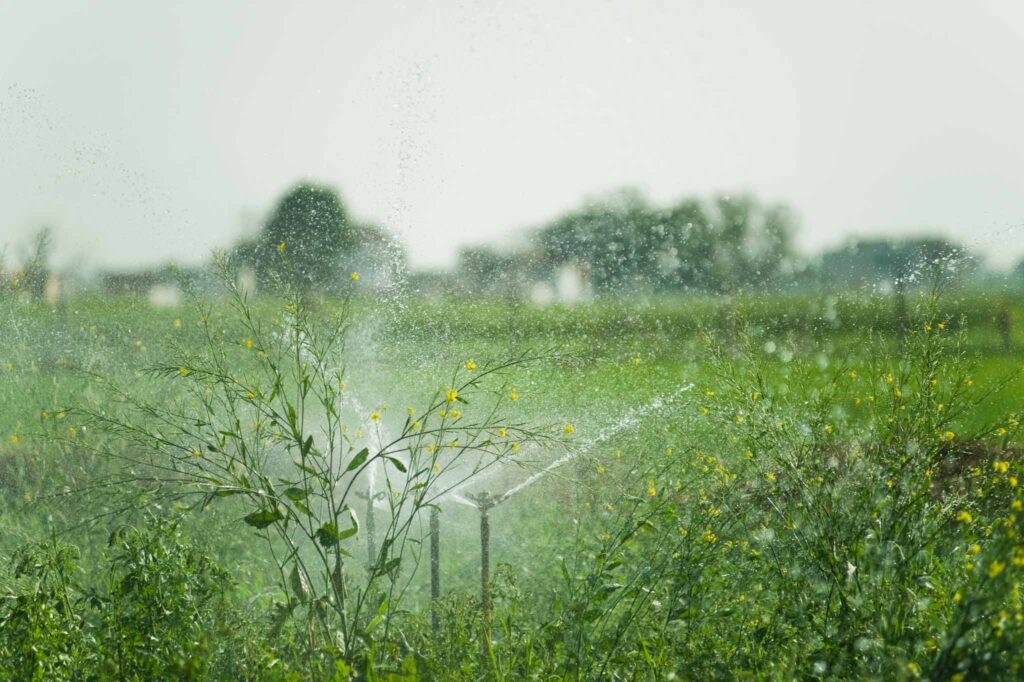
At-Home Composting Options
Backyard Composting
Smaller Spaces
If you have the standard city suburb-sized yard, you might be limited in the amount of space you can dedicate to your compost pile. You will likely be limited to either a compost bin or compost tumbler, both of which can be purchased or made yourself. Either way, you’ll have to be conscious of the size of the container.
If it’s too big, the compost pile may not get enough air, and too small may mean insufficient heat can build up. Experts say you’ll want at least one cubic yard, ideally between three to five feet cubed. Find more information and steps to follow for this method in the Composting Process section below.

Related: Why is Grass Bad for the Environment?
Large Spaces
If you have a lot of outdoor space to play with, you might consider a three-bin compost system. This requires a larger yard and a little bit more dedication and time.
Another method that may work for you if you have a large property or garden is trench composting. In this method, you bury your compost in the ground near the area you’d like the nutrients to benefit.
If you’ve opted for cold composting and you have a good spot, you could also create a compost heap. The difference between this and using a bin or tumbler is that you simply create a pile somewhere in your yard that makes sense according to the guidelines below. You can try maintaining the compost as a hot pile, but since it’s not covered in any way the moisture level may be challenging to balance and you’ll still need to turn it often for aeration.
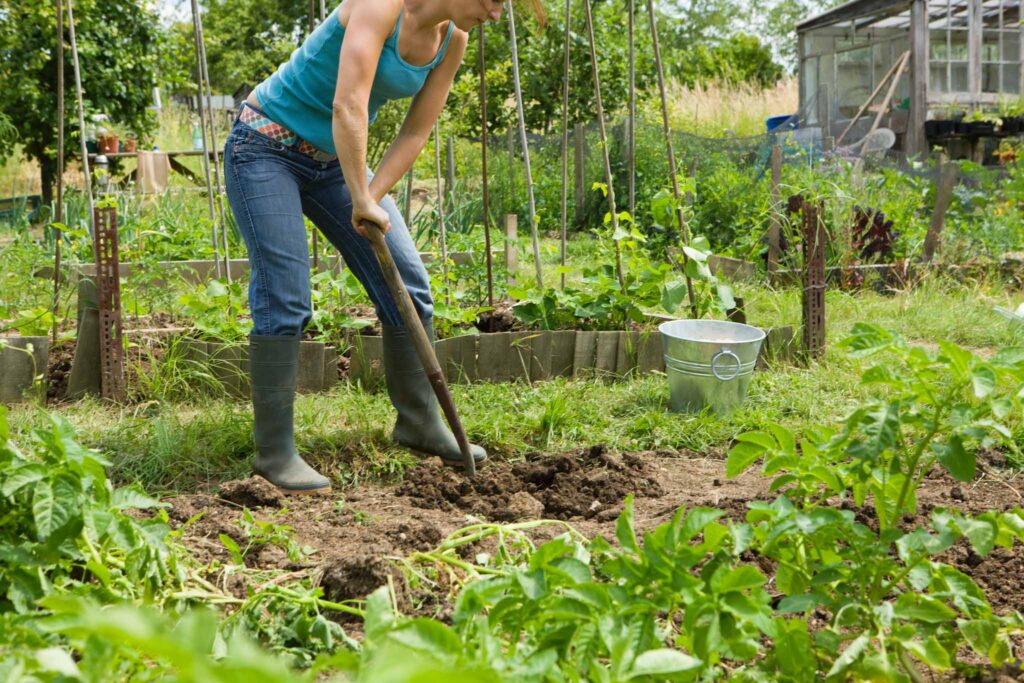
Conveniently store all your food scraps in the kitchen composting bin until it’s time to transfer to your outdoor composter with this Compost Bin made from recycled materials from TerraCycle.
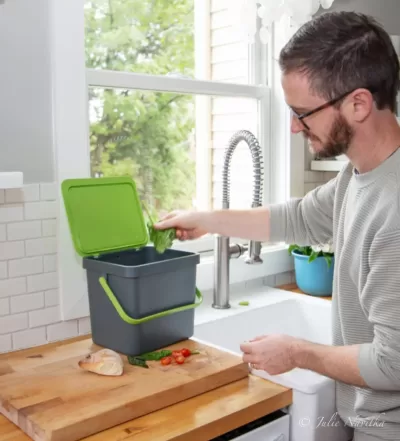
Compost Bin – terracycle
About this item:
- Movable handle for easy transport
- Dishwasher safe
- BPA & phthalate free
- 50% recycled content
Indoor or Very Small Space Composting
You can still compost even if you don’t have a yard. A balcony, a pantry, or a laundry room would be a good space for vermicompost using worm bins. You could purchase a container or make one yourself and acquire the correct type of worm (not any old worms will do!) A gardening store might be your best bet for both a bin and worms. You’ll have to maintain the temperature and moisture level and learn how to add suitable materials for this type of composting.
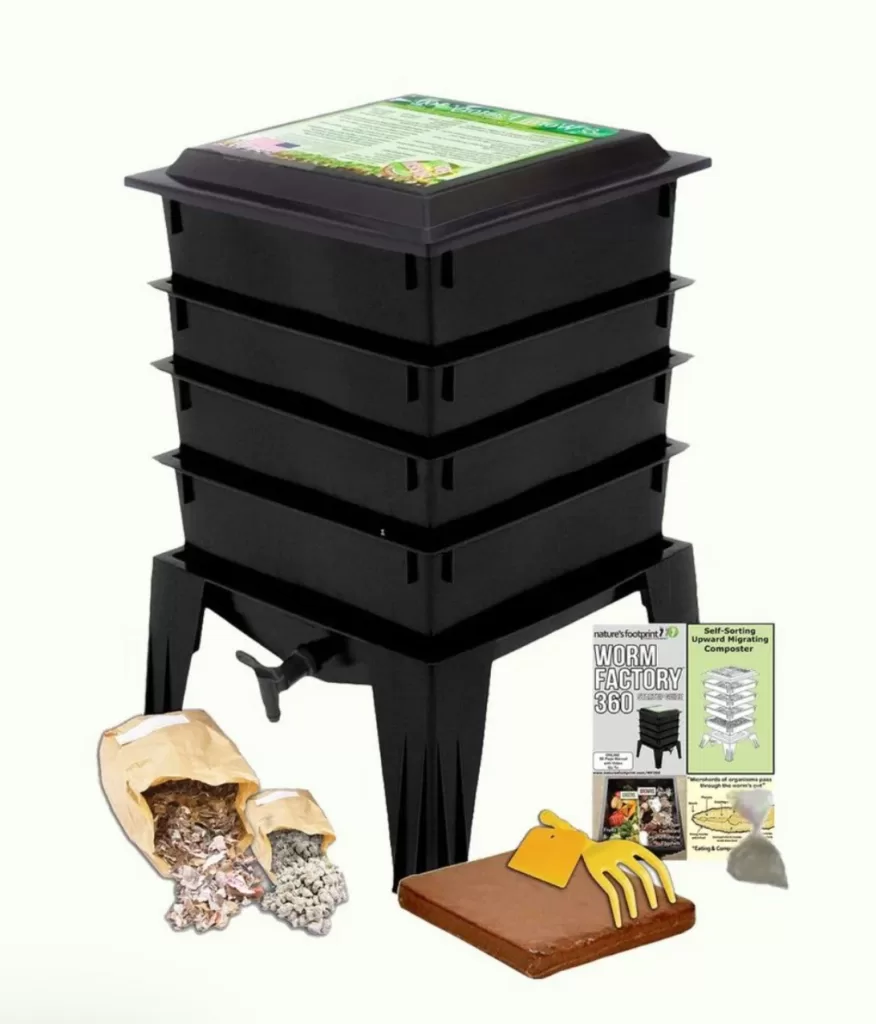
Worm Factory Compost System – zero waste store
About this item:
- 1% for the planet
- Shipped carbon neutral
- 5 year limited warranty
- US made high quality post-consumer recycled plastic
Interested in growing veggies indoors year-round? Check out these amazing options from Lettuce Grow – only four square feet of space needed!
Outdoor Hot Composting Process
In this section, I will focus on composting using the hot compost method in either a bin, pile, or tumbler. If you’ve chosen to go ahead with the larger three-bin or smaller vermicomposting approach, please refer to the links provided in the section above.
Where To Keep Your Bin
Once you’ve either purchased or built your composting bin or tumbler, you’ll have to choose where to place it. Choose somewhere accessible, especially if you live somewhere it snows a lot! You’ll also want a spot with good drainage but near enough to a water source. Make sure to choose a mostly shady area, as too much sun can dry out the pile quickly.
Green Materials vs Brown Materials
If you want to compost like a pro, you’ll have to sort your organic waste into two categories so you can add them as needed.
Brown materials are carbon-rich materials such as fallen leaves, plant stalks/twigs, unglossed shredded paper, brown bags, and cardboard. Green materials include kitchen scraps like vegetable peelings, coffee grounds, crushed eggshells, paper tea bags, and grass clippings. Green composting materials are the nitrogen source for your compost bins.
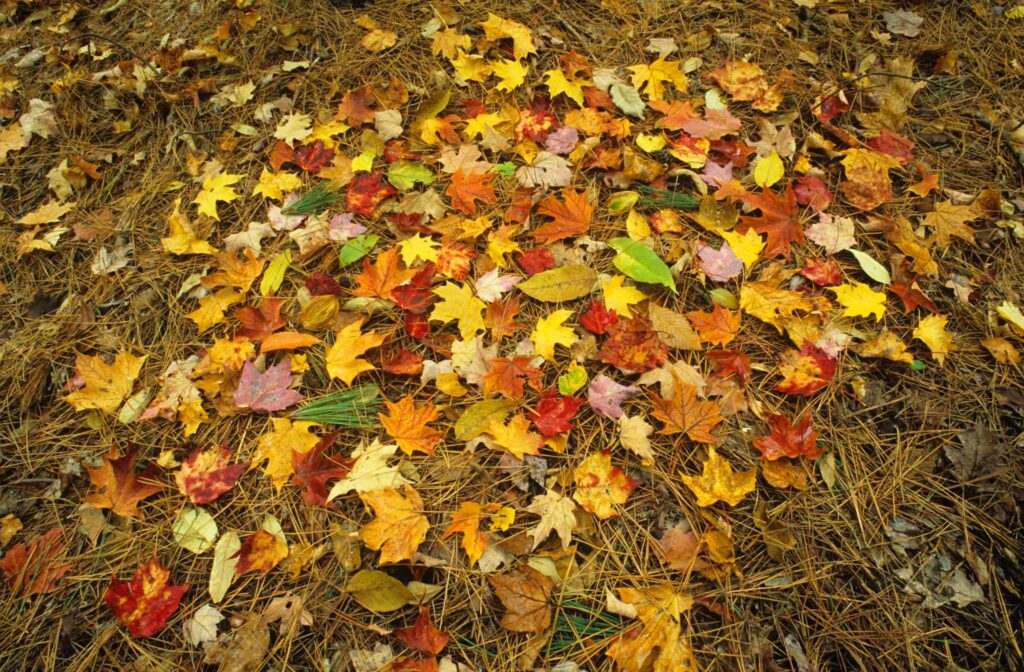
Starting and Layering
To start your pile, you first want to lay down a thick layer of bulkier brown organic materials like twigs and plant stalks. This will elevate your pile and allow airflow. After this, you will want to alternate layers of greens and brown, with two to three times more browns than green material. Remember to first break down the materials you add to speed up the decomposition process, especially larger kitchen waste like corn cobs.
Monitoring Your Pile
On top of turning your pile occasionally to allow for air, you’ll want to keep an eye on the moisture level. Your compost pile should be similar to a wrung-out sponge. Your compost pile should be between 130-140 degrees Fahrenheit (54-60 degrees Celsius) for the best, quickest results. If you’re serious about achieving the best results, I suggest you buy a composting thermometer.
Composting troubleshooting
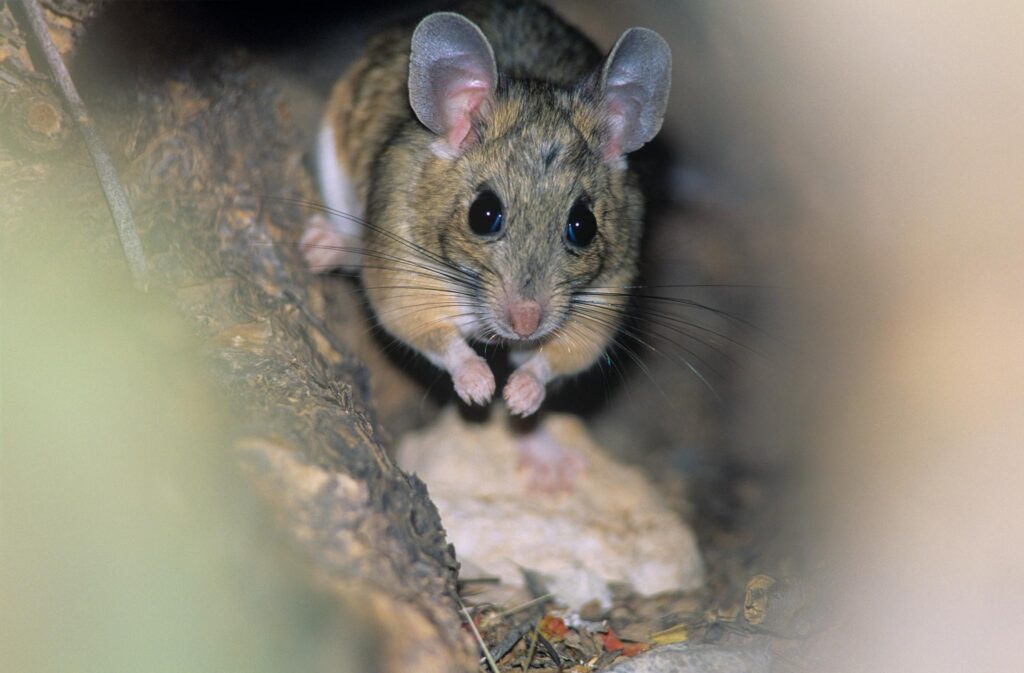
Common composting problems and how you can try to fix them
The compost pile is too dry – Moisten and turn the pile.
The compost has a really bad smell – The pile likely has excess moisture and needs more air. Add browns and turn the pile.
There is not enough heat – The pile requires more nitrogen. Add greens and turn.
Your pile is attracting pests – Make sure your food scraps don’t contain meat, dairy or grease, which will attract pests. You can try adding soil or wood ash to your food scraps and cover them up after adding them. Make sure the drainage holes and other gaps in your bin are no larger than a quarter inch in diameter. Mice don’t like wet layers or being disturbed, so maintain the moisture level and turn often. Ants also show up when the pile is too dry.
Some expert advice from Judy, facilitator from Compost Collective – “A common mistake for people composting at home is they add too much green material to their systems, and due to this overload, problems occur. The systems will quickly turn anaerobic when the inclusion of brown materials is lacking. In this situation, the bins will attract infestations of fruit flies, the smell will be sour and sharp and the compost itself will be sluggish in the breakdown process.”
What Not to Put in Your Compost Pile
Here’s a handy infographic about greens vs. browns and what not to compost. Remember that you should also avoid composting perennial weeds and weed seeds, bones from meat, and dryer lint. Don’t forget to check your food scraps for produce stickers before adding them to your bin!
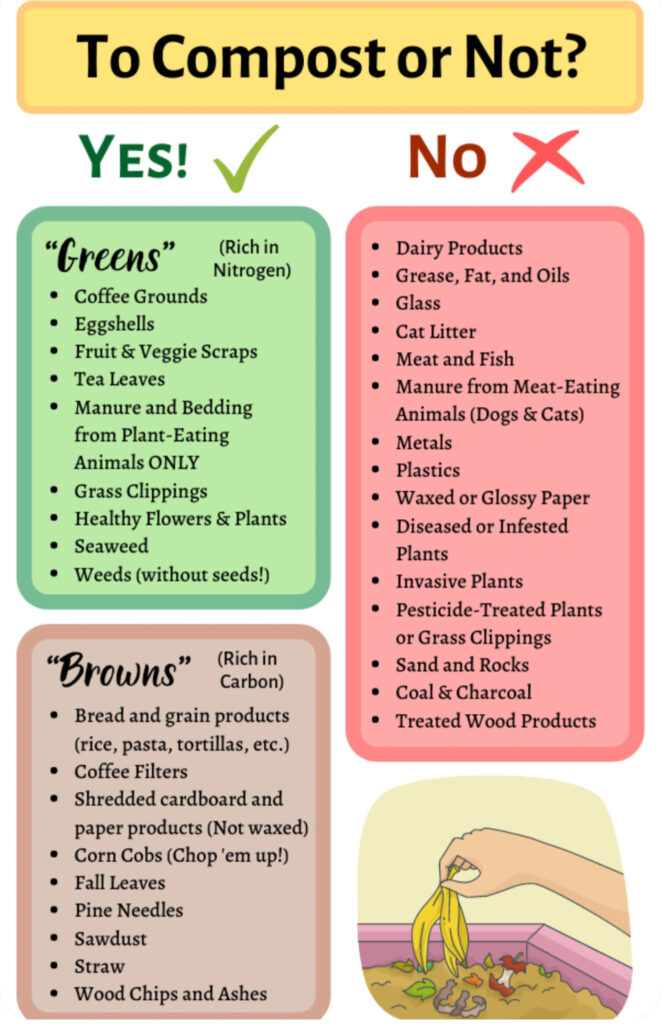
Judy, Compost Collective Facilitator, also states that “rats can also be a problem, they often show up if the compost is sitting untouched for months, or if processed foods and meats are being added to the bin. Ideally, foods in this category are fermented in a Bokashi system prior to being added to a compost bin.”
A note about compostable packaging and utensils- most at-home compost piles do not generate enough heat to decompose these products. Check online to see if your city has a facility capable of composting these items (and factor this into your decision-making when buying packaged products!)
Finished Compost
How Do I Know It’s Finished?
If you’ve mastered how to compost like a pro, your pile can start producing nutrient-rich, finished compost in as little as three weeks. It will take a little longer if you’ve been growing your larger pile gradually, but have patience! Cold compost can take up to a year or more, but either way, finished, good compost will be dark brown, loose and crumbly, and smell like rich earth or soil. All of the materials should be almost fully decomposed in a finished compost.
Using Your Compost
You can use your finished compost in many ways! I just spread mine on top of the soil in my vegetable garden when it’s ready or add it to my potting soil. You can use it to feed fall perennials or spring bulbs or treat the plants in your window boxes. Your plants will love the extra nutrients, and you won’t need chemical-laden fertilizers. Not to mention you’ll have reduced household waste production and no more smelly garbage bins in the kitchen! Sounds like a sustainability success to me!
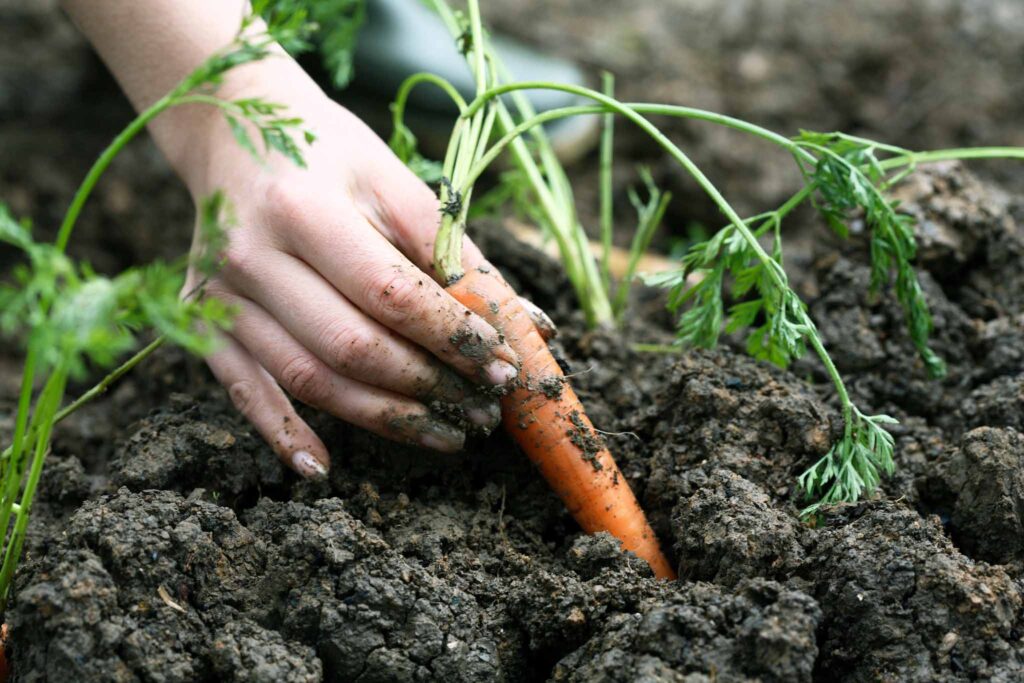
Composting Conclusion
It can seem daunting having so many options and methods to choose from when it comes to composting. Take it one step at a time. Choose the way that makes sense for your space and how much effort you’d like to apply. Next, purchase or build the appropriate receptacle. Lastly, learn what to compost (and what not to compost!) Maintenance will depend on the method you choose, but I promise once you’ve started, it will become routine, and the benefits are definitely worth the work!
Remember, each journey starts with just one step, and the one to become an expert composter is no different.
All products recommended to you on Successfully Sustainable are independently researched in depth. To avoid waste and lead a minimal lifestyle, we test products only when required. This post contains affiliate links. If you buy something through our links, we may earn a small commission. Learn more about this here.

